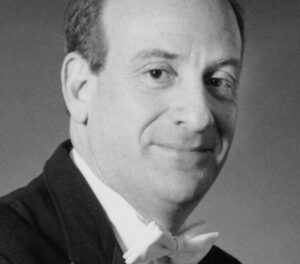Carolina Performing Arts at UNC-Chapel Hill is making a pleasant habit of frequently including the great Alvin Ailey American Dance Theater in its performance series at Memorial Hall. AAADT’s appearance this year (for a two-night run) had been awaited with curiosity, because of the company’s changing of the guard last year. Upon her retirement as artistic director, Judith Jamison, who had been picked by Ailey himself as his successor, chose dancemaker Robert Battle as hers. You may have seen Battle dance with the Parsons Dance Company, or later, with his own company, Battleworks. Although Battle has worked extensively with the Ailey Company since 1999, his aesthetic was formed a little later than the 1950s (he was born in 1972) and his new role as artistic director of the venerable Ailey Company would seem to hint at, if not a change of direction, a shift in approach to the exploration of African-American cultural life through dance.
This idea was borne out with the evening’s first work, Paul Taylor’s 1981 Arden Court, set to Baroque music by William Boyce. Although the dancers had worked directly with Taylor (see N.Y. Times interview to learn the work, they did not seem fully in control of the material on the 13th. One can’t complain about seeing Ailey dancers in very minimal costumes no matter what they are doing, but there were some scary moments with the lifts. Still, it was very interesting to see how Arden Court, a confection of featherweight beauty when danced by Taylor’s own company, fared in the bodies of dancers with such different style and training. The performance was not altogether successful, but I did feel that you could see the bones of the work better here, rather than being seduced by its ravishing surface.
Rennie Harris’ Home, from 2011, followed the first intermission. Rennie Harris is a choreographic genius, although sometimes you need earplugs to lower the volume of the rhythmic, hypnotic, music he uses (Home‘s is by Dennis Ferrer and Raphael Xavier). His own company is called Rennie Harris Puremovement, and the primacy of movement over image makes the images’ startling power even more impressive. This was a tour de force for fourteen dancers. From a dense cluster, they spread apart like robotic ants leaving the hill, weaving among each other as they spread, purposeful, intent and alone. The extent of entropy reached (what a comforting thought), they reverse and reintegrate into a communal whole. Here, the Ailey dancers showed all their power, and the dance was the high point of the evening.
After a charming, brief solo work, Journey, by Joyce Trisler, and danced by Jacqueline Green with impressive grace, the company launched into its perennial favorite, Revelations. That this is a masterwork, there is no doubt, but occasionally one wishes for a different dance. Still, the well-documented glories of Revelations are always new to some viewers. Sometimes its performance catches fire, and sometimes it doesn’t quite, just as with any work any company performs often. This one was not the best I’ve seen, but each viewing offers an opportunity to focus your attention differently. I was particularly struck this time with how much the opening image resembles an Elizabeth Catlett print or sculptural design — until it bursts apart into the flashing river of motion comprising this brilliant ten-part cycle of suffering, redemption and joy.
The company returns to North Carolina on 5/15 for a series of 7 performances in Charlotte’s Knight Theatre. For details, click here.











